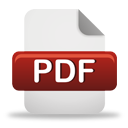

CLC number: TN927
On-line Access: 2025-07-02
Received: 2024-01-14
Revision Accepted: 2025-07-02
Crosschecked: 2024-05-16
Cited: 0
Clicked: 1282
Citations: Bibtex RefMan EndNote GB/T7714
Qingquan LIU, Lihu CHEN, Songting LI, Yiran XIANG, Baokang ZHAO. A novel frequency-protection interval adjustment method based on Doppler frequency offset pre-compensation for space-based Internet of Things[J]. Frontiers of Information Technology & Electronic Engineering,in press.https://doi.org/10.1631/FITEE.2400033 @article{title="A novel frequency-protection interval adjustment method based on Doppler frequency offset pre-compensation for space-based Internet of Things", %0 Journal Article TY - JOUR
基于天基物联网多普勒频率偏移预补偿的新型频率保护间隔调整方法1国防科技大学空天科学学院,中国长沙市,410073 2国防科技大学计算机学院,中国长沙市,410073 摘要:为满足海量终端用户的接入需求,天基物联网需要足够的频率资源用于分配。然而,目前可用的频率资源几乎已经分配完毕。而已分配的频率资源却存在频谱利用率低的问题。为在频谱资源受限的条件下实现更多用户入网,本文提出一种基于多普勒频率偏移预补偿的频率保护间隔调整方法,以提高频谱资源的利用率。通过计算卫星与信号发射终端之间的相对运动,结合报文长度和传输速率,确定多普勒频率偏移的最佳预补偿值,减小频率保护间隔。仿真结果表明,该预补偿方法可将用户访接入量增大90-400倍。合理地选择报文拆分次数和传输速率进行多普勒频率偏移预补偿计算,用户接入量还可额外增加45%或更多。本文提出的调整频率保护间隔的方法提高了频谱利用率,为解决频率受限条件下海量用户接入的难题提供了解决方案。 关键词组: Darkslateblue:Affiliate; Royal Blue:Author; Turquoise:Article
Reference[1]Centenaro M, Costa CE, Granelli F, et al., 2021. A survey on technologies, standards and open challenges in satellite IoT. IEEE Commun Surv Tut, 23(3):1693-1720.  [2]Chen LH, Cui JW, Li ST, 2022. Key technologies and application prospects for space-based Internet of Things. Space Int, 2022(1):26-32 (in Chinese).  [3]Deng QY, Li ZT, Chen JB, et al., 2018. Dynamic spectrum sharing for hybrid access in OFDMA-based cognitive femtocell networks. IEEE Trans Veh Technol, 67(11):10830-10840.  [4]Diao NH, Liu JQ, Sun CR, et al., 2012. Satellite orbit calculation based on SGP4 model. Remote Sens Inform, 27(4):64-70 (in Chinese).  [5]FCC, 2002. Spectrum Policy Task Force. Technical Report, ET Docket No. 02-135. Federal Communications Commission, USA.  [6]Ge LJ, Li Y, Tao J, 2016. Time and frequency synchronization scheme for IEEE802.15.3c OFDM system. J Commun, 11(2):143-148.  [7]Hou HL, Chen YJ, Ding S, et al., 2015. Estimation and compensation method for the Doppler frequency shift of high dynamic terminal in LEO satellite communication system. J Comput Inform Syst, 11(15):5717-5728.  [8]Jabbari B, Pickholtz R, Norton M, 2010. Dynamic spectrum access and management. IEEE Wirel Commun, 17(4):6-15.  [9]Lei HJ, Zhou S, Park KH, et al., 2023. Outage analysis of millimeter wave RSMA systems. IEEE Trans Green Commun, 71(3):1504-1520.  [10]Li K, Li F, Yang WM, 2023. Space-based Internet of Things: basic concepts, system architecture and development trends. Telecommun Eng, 63(2):281-290 (in Chinese).  [11]Li ZJ, 2023. Design of low Earth orbit space-based Internet of Things systems. Mob Commun, 47(7):98-103 (in Chinese).  [12]Liu K, Zhu LD, 2017. Research on the random access technology of LTE based satellite mobile communications. Radio Commun Technol, 43(2):12-15 (in Chinese).  [13]Liu SJ, Xu FJ, Liu LY, et al., 2020. Introduction of Starlink second generation system. Satell Netw, 12:62-65 (in Chinese).  [14]Liu X, Huang C, Cui YQ, et al., 2015. Research on Doppler frequency-shift compensation method based on SGP4 model in satellite communication systems. Sci Technol Eng, 15(21):154-158 (in Chinese).  [15]Liu YJ, Li BC, Wang YZ, 2021. Key issues in development and application of the sky-based Internet of Things. Space Integr Ground Inform Netw, 2(1):81-86 (in Chinese).  [16]Liu YQ, Li HG, Shi JL, et al., 2023. Doppler frequency offset pre-compensation algorithm based on mixed forcast for LEO satellite communications. Chin High Technol Lett, 33(6):559-567 (in Chinese).  [17]Mao X, 2020. Research on Synchronization and Access Technologies for Satellite OFDM Systems. MS Thesis, National Key Laboratory of Science and Technology on Communications, Chengdu, China (in Chinese).  [18]Tan X, Wang H, Fu LZ, et al., 2018. Collision detection and signal recovery for UHF RFID systems. IEEE Trans Autom Sci Eng, 15(1):239-250.  [19]Vakil V, Aghaeinia H, 2009. Throughput analysis of STS-based CDMA system with variable spreading factor in non-frequency selective Rayleigh fading channel. Comput Electr Eng, 35(4):528-535.  [20]Wang C, Cui GF, Wang WD, et al., 2017. Joint estimation of carrier frequency and phase offset based on pilot symbols in quasi-constant envelope OFDM satellite systems. China Commun, 14(7):184-194.  [21]Wang X, Chen HH, Liu XQ, et al., 2022. Complementary coded CDMA with multi-layer quadrature modulation. IEEE Trans Veh Technol, 71(3):2991-3007.  [22]Yang H, Yuan JQ, Li C, et al., 2022. BrainIoT: brain-like productive services provisioning with federated learning in industrial IoT. IEEE Int Things J, 9(3):2014-2024.  [23]Yang Y, 2019. Research on Decision-Making Mechanism for Improving Adaptability of Cognitive Radio. PhD Dissertation, Harbin Institute of Technology, Shenzhen, China (in Chinese).  [24]Yao QY, Yang H, Zhu RJ, et al., 2018. Core, mode, and spectrum assignment based on machine learning in space division multiplexing elastic optical networks. IEEE Access, 6:15898-15907.  [25]Yao QY, Yang H, Bao BW, et al., 2021. Federated transfer learning-based data security assurance in edge optical networks for IoT applications. Proc Asia Communications and Photonics Conf, p.1-3.  [26]Yu A, Yang H, Feng CY, et al., 2023. Socially-aware traffic scheduling for edge-assisted metaverse by deep reinforcement learning. IEEE Netw, 37(6):74-81.  [27]Yu TK, Yang H, Nie JL, et al., 2024a. Bias-compensation augmentation learning for semantic segmentation in UAV networks. IEEE Int Things J, 11(12):21261-21273.  [28]Yu TK, Yang H, Yao QY, et al., 2024b. Multi-visual-GRU-based survivable computing power scheduling in metro optical networks. IEEE Trans Netw Serv Manag, 21(1):1302-1315.  [29]Zhang JY, Yu ZY, Zhu M, et al., 2021. Design of carrier synchronization algorithm for SCMA system in LEO satellite communication. Syst Eng Electron, 43(5):1354-1360 (in Chinese).  [30]Zhang L, Xiao M, Wu G, et al., 2017. A survey of advanced techniques for spectrum sharing in 5G networks. IEEE Wirel Commun, 24(5):44-51.  Journal of Zhejiang University-SCIENCE, 38 Zheda Road, Hangzhou
310027, China
Tel: +86-571-87952783; E-mail: cjzhang@zju.edu.cn Copyright © 2000 - 2025 Journal of Zhejiang University-SCIENCE | ||||||||||||||


 ORCID:
ORCID:
Open peer comments: Debate/Discuss/Question/Opinion
<1>